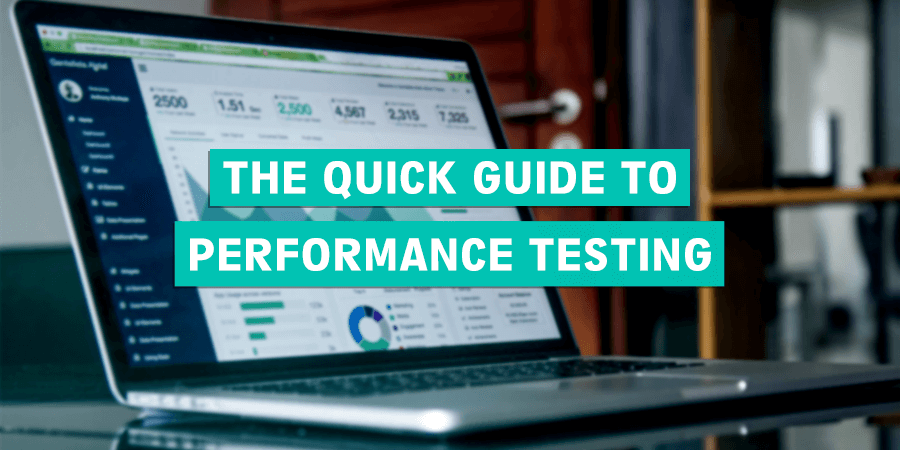Performance testing is a critical step in the software development process that enables organizations to deliver high-quality applications. Despite its importance, it is not uncommon for performance testing to be overlooked and only executed right before an application is released. When this happens, applications can fall victim to complex and expensive fixes or worse – a poor and unreliable user experience.
In this article, you'll discover
- What performance testing is
- Why performance testing is important
- How and when to conduct performance tests
- The best practices for performance testing
What is Performance Testing
Performance testing is a non-functional software test used to evaluate how well an application performs. More precisely, performance testing measures an application’s stability, speed, scalability, and responsiveness under specific workloads.
In particular, performance testing aims to evaluate a number of metrics such as browser, page, and network response times, server request processing times, number of acceptable simultaneous users, CPU memory consumption, and the number and type of errors that arise when the application is being used.
Why Performance Testing is Important
Whether it is a retail websites or a business-orientated SaaS solution, performance testing plays an indispensable role in enabling organizations to develop high-quality digital services that provide reliable and smooth service required for a positive user experience.
The benefit of performance testing is its ability to proactively identify issues that can hinder an application’s ability to operate normally. When performance issues do arise, it is not uncommon the for users to experience slow responses, long load times, unresponsive functionalities, system crashes, and other issues directly related to the application’s speed, stability and scalability.
Only by fixing these performance issues can an organization maximize its ability to provide a great user experience and achieve its business goals.
When to Execute Performance Tests
Ideally, performance testing should be run early and often during the software development life cycle (SDLC). Like general software bugs, the cost for correcting performance issues typically increases as the SDLC moves further along.
Performance issues identified in the production environment can easily taint the user experience and directly hurt user growth rates, customer acquisition costs, retention rates, and other important KPIs.
The failure to uncover or fix performance issues before an application is released will then require organizations to spend many man-hours, which were already spent when the application or web server was previously configured.
Even before the first line of code is written, run performance tests to assess the base technology (network, load balancer, web or application server, database, application) for the workload levels that the application will support. This in turn is a great way to catch performance issues early and avoid expensive fixes in the later stages of development.
Performance tests should also be used throughout the development phase to evaluate web services, microservices, APIs, and other important components. As the application begins to take form, performance tests should become part of the normal testing routine.
Types of Performance Testing
There are several type of performance tests, each designed to measure or assess different aspects of an application.
Load testing
Loading testing evaluates an application’s performance under normal or expected workloads. The goal of loading testing is to uncover any bottlenecks before the application is released.
Stress testing
Unlike load testing, stress testing measures an application’s performance when faced with extreme workloads to determine how it manages high traffic levels or data processing. The goal of stress testing is identify the application’s breaking point.
Spike testing
Spike testing measures an application’s behavior when its workload increases quickly and repeatedly over a short period.
Endurance testing
Similar to load testing, endurance testing evaluates the applications performance under normal workloads over long periods. The objective of endurance testing is to check for problems such as memory leaks, which can impair the application’s response time.
Scalability testing
Scalability testing measures an application’s ability to scale up to manage an increase in its workload. As the workload increases, the tests carefully monitors the applications performance for any declines.
Volume testing
Volume testing, also known as flood testing, looks at how well an application performs when it is inundated with large amounts of data. The goal of volume testing is to find any performance issues caused by data fluctuations.
How to do Performance Testing
Implementing performance testing will largely depend on the nature of the application as well as the goals and metrics that organizations find to be the most important. Nonetheless, there are some general guidelines or steps that most performance tests follow.
Identify the Test Environment and Tools
First, identify the physical test environment, production environment, and testing tools that are available to your team. It is also important to record the hardware, software, infrastructure specifications, and network configurations in test and production environment to ensure consistency. While some tests may take place in the production environment, it is vital to establish stringent protections to prevent testing from disrupting production operations.
Identify Performance Metrics
Here, the QA team must determine the success criteria for the performance test by identifying both the goals and constraints for metrics like response time, throughput, and resource allocation. While key criteria will be derived from the project specifications, testers should nonetheless be free to establish a broader collection of tests and performance benchmarks. This is essential when the project specifications lack a wide variety of performance benchmarks.
Plan and Design Performance Tests
Determine how usage will vary among the application’s end-users and create scenarios to test for all possible use cases. Additionally, be sure to identify all metrics that need to be measured during the tests.
Configure Test Environment
Before the test is executed, prepare the testing environment along with any necessary tools or resources.
Implement test design
Using your test design, create the performance tests.
Execute tests
Execute the tests and monitor the results.
Analyze, report, and retest
Analyze and share the results. Depending on your needs, run the test again using the same or different parameters.
Performance Testing Advice
In software testing, the ability to produce quality and accurate results largely stems from the quality of test itself. The same is true for performance testing. That is why producing a test environment that is as identical as possible to the production environment is absolutely crucial to your ability to accurately measure the application’s performance.
As mentioned earlier, incorporate performance testing early and often into the SDLC. Waiting until the end of the project to conduct the first performance tests can make correcting performance issues more costly. Additionally, it is highly recommended to test individual components or modules, not just the finished application.
Executing tests multiple times is another good practice to ensure the tests yield an accurate assessment of the application’s performance. The more consistent the results, the more confidence you will have in determining if the application’s performance is acceptable or not.
While there are many performance-testing tools on the market, choosing the right is critical. To do so, please take into account the specific project needs, organizational needs, and technological specifications of the application. Furthermore, be sure to evaluate your team’s experience or skills in order choose a tool they can use or support them as they learn to use it.
At StarDust CTG, we accompany our clients throughout the SDLC to not only plan and execute performance tests, but also to implement tools that can optimize the entire QA process. Contact us to learn more about performance testing, or see how we are enabling organizations to overcome their testing challenges.



